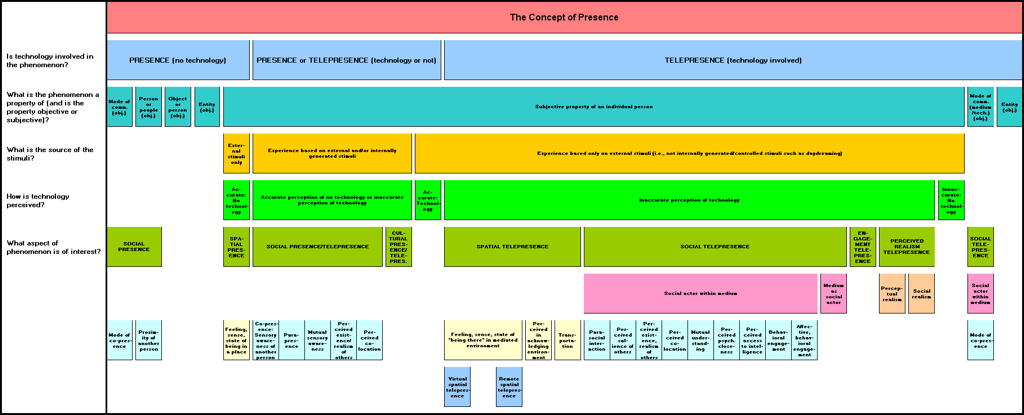
Defining Presence
Matthew Lombard & Matthew T. Jones
This interactive figure is a supplement to Lombard, M., & Jones, M. T. (2015). Defining presence. In M. Lombard, F. Biocca, W.A. Ijsselsteijn, J. Freeman, & R. Schaevitz (Editors), Immersed in Media: Telepresence Theory, Measurement and Technology. London: Springer. (Information here)
NOTE:
Move your mouse over the image to see labels; click on
headings for detailed information.
Internet Explorer 7 users can hold Ctrl
and + or - keys down to adjust size.
A larger version of this figure
is available here.
